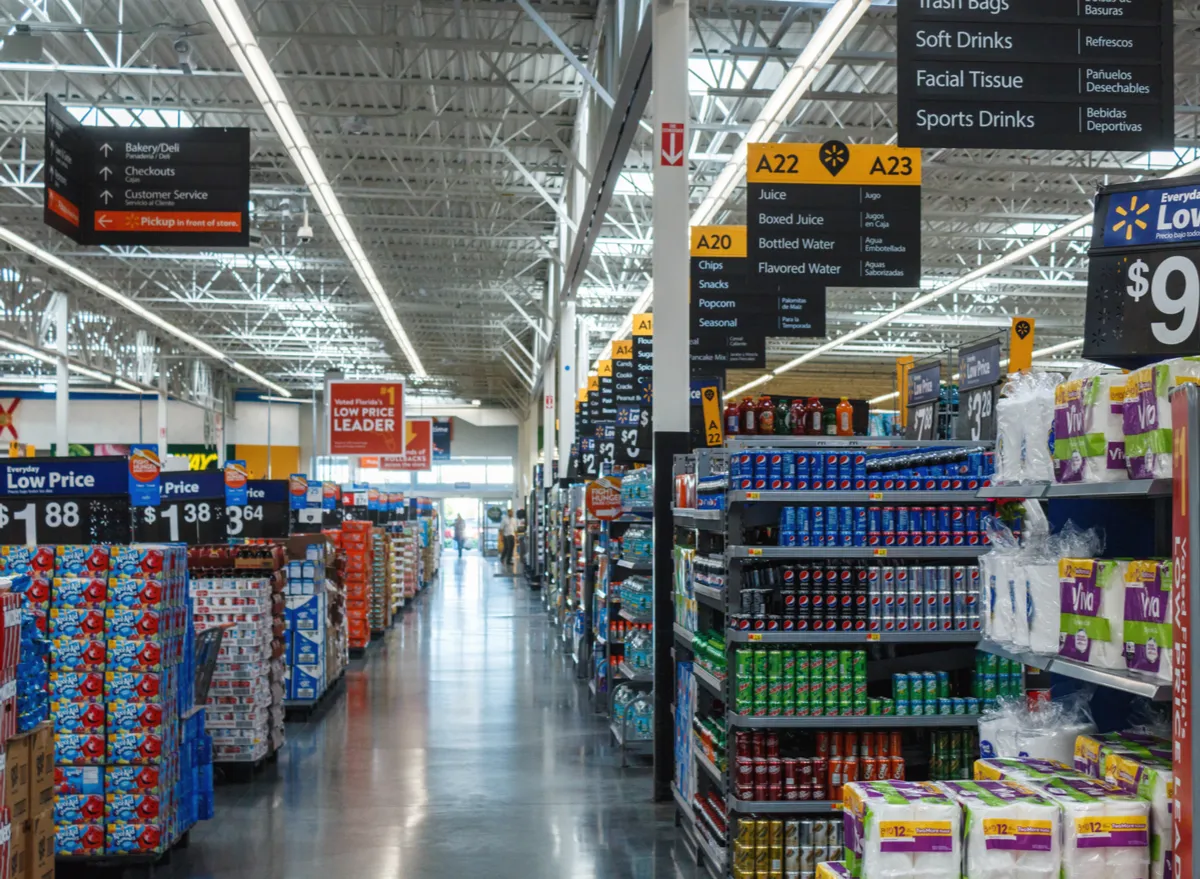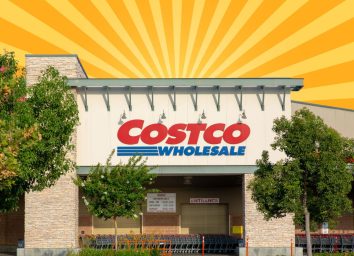Here's What Walmart and Other Stores Are Doing With a Massive Surplus of Goods

Grocery shopping this summer has been defined by continued price increases and even some shortages. But ever since demand went up after the pandemic, stores have been trying to keep shelves stocked, and now there's significant excess in surplus. Places like Target and Walmart are grappling with thousands of extra products, creating unique shopping experiences.
In June, Doug McMillon, the President and CEO of Walmart said that the company was working on controlling what it could to reduce inventory and still keep its promise to focus on 10,000 rollbacks and sales for customers. That same month the president and CEO of Walmart's U.S. division, John Furner, said that there was about 20% of inventory that "if you could just wish [it] away and make it disappear, you would."
Target company leaders said similar things, additionally noting that this summer would be about "rightsizing" all the extras. Now as we head into late summer and early fall, evidence is showing the issue is persisting.
It's the opposite of bare shelves shoppers have seen periodically in the last few years—photos published by Business Insider show inventory spilling off of crates and disorderly boxes stacked high in the middle of aisles in a Walmart store in Florida.
It's reported that there are more than 30% more items in stock at America's largest retail chain than earlier this year, with employees saying backrooms are overflowing as well and that many items are re-ordered automatically, even if there is more than enough to sell. They add that management has said there are "no solutions" and it could be early 2023 before things are leveled out.
One water bottle company that sells its products to Amazon, Walmart, and Target is cutting orders to help, Supply Chain Dive says. Helen of Troy, which sells brands like Vicks and Hydro Flask, saw demand go up during the pandemic but is seeing it taper off now. The company thinks it will take about nine months for things to get back to normal since many of its goods come from Asia.
As for what this means for shoppers—good news—expect to see sales through stores. Although Walmart passed on its own version of Amazon Prime Day this year, its plan throughout the summer was to have continuous sales, with other stores doing the same.









